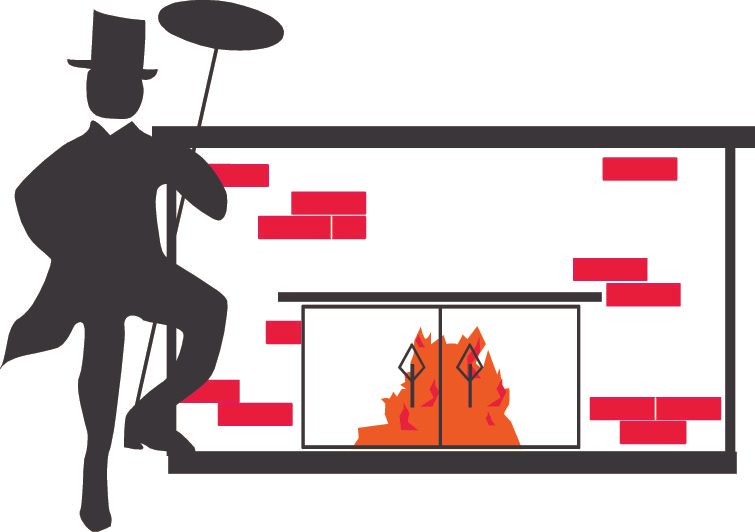Minor masonry repairs usually involve pointing a chimney. Pointing a chimney involves filling in the gaps in the mortar that appear between the bricks. The gaps are usually caused by weather exposure. Pointing a chimney helps to maintain its integrity so that bricks do not become loose and fall out.
The top of the chimney is oftentimes called the crown. Crowns not protected from the elements by a chimney cap can become cracked, allowing water to seep into the interior of the chimney. We can repair minor cracks in a chimney crown with a product called CrownSeal®, a flexible product that can withstand severe weather and thermal stress. For major cracks, we can replace the crown.
Major masonry repairs involve tearing down and rebuilding a chimney, either with brick or concrete block.
We also do masonry repairs for fireplaces/fireboxes. We specialize in Rumford-type fireplaces and can reconfigure an existing fireplace into a Rumford fireplace.
FLASHING
The flashing of a chimney is very important for keeping out water. Oftentimes, we have seen chimneys that were not flashed properly. Before the roof shingles are installed, there should be a layer of ice and water shield around the chimney. The flashing itself has two components – counter flashing and flashing. When the roof shingles are installed, a 5” x 7” aluminum counter flashing (also called step flashing) should be weaved into the shingles. The flashing (this can be lead, copper, or tin) goes over the counter flashing and should not be weaved into the shingle; it should lie on top of the shingle. If the flashing is weaved in with the shingles, it will cause the shingles to lift, providing a place for water to penetrate.
Many people use tar on top of the flashing as a temporary measure to help prevent water leakage. If you see tar on your chimney, then at one point in time, there was a leak, and unfortunately, it will leak again if it is not properly fixed. Tar is a temporary fix because exposure to the weather will cause it to crack, dry out, and fall off.
DAMPER REPAIRS
Over time a fireplace damper can stop working properly because the pin or hinge has become dislodged or the damper has become rusted and will not close properly. We repair dampers, or if it cannot be repaired, we can replace the damper, usually with a top-sealing damper. A top-sealing damper sits on top of the chimney and has a metal cord that runs down to the firebox to open and close the damper.
